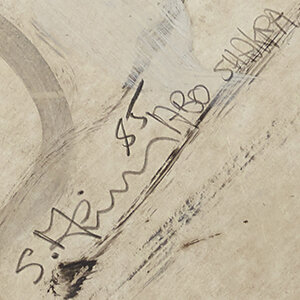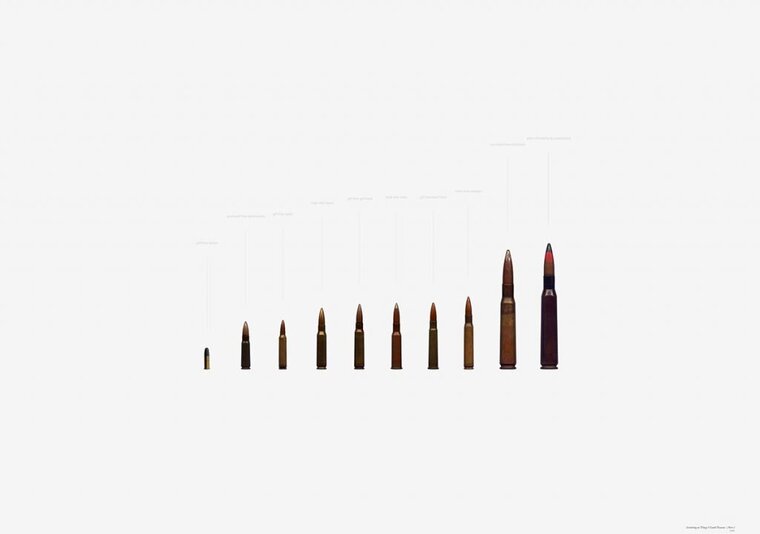


Last updated on Tue 5 September, 2017


Between two rounds of fire, the exile of the sea:
Arab Modern and Contemporary Works from the Barjeel Art Foundation
American University Museum at the Katzen Arts Center, Washington DC
5 September – 17 December 2017
Opening Reception & Curator Talk: 9 September 2017
Washington, DC, 18 August 2017 – This September, the Barjeel Art Foundation presents Between two rounds of fire, the exile of the sea at American University Museum at the Katzen Arts Center, Washington, DC. Curated by Karim Sultan of Barjeel Art Foundation, this exhibition aims to explore ideas around violence through a number of modern and contemporary works drawn from the Barjeel collection.
The exhibition is divided loosely into three categories: ‘Territories’, ‘Signs’, and ‘Bodies’. The first, ‘Territories’, includes works that deal with the violence implicit in the representation of geographies through map making, and on the land itself. Artists in this section include Ali Cherri, Zineb Sedira, and Akram Zaatari. The second category, ‘Signs’, utilises works that deal with the effects of and on language, reflecting the deterioration and fragility of communication, and the social and linguistic structures on which they rely. Artworks in this section include those from pioneering artists Shakir Hassan Al Said, Huda Lutfi, and Walid Raad. The third category, ‘Bodies’, utilises works that deal with the body as a site on which violence is committed. Artists here include Hayv Kahraman, Charbel-joseph H. Boutros, and Nadia Ayari.
Karim Sultan, who has recently assumed the new role of Director of the Barjeel Art Foundation said:
“Rather than looking at violence and conflict in a direct, didactic way, the exhibition aims to explore the holes in meaning and perception where violence takes place. Between two rounds of fire, the exile of the sea focuses on the blind spot that occurs in our understanding of the world - particularly where that violence maintains social structures or yields benefits for others. It is with great enthusiasm that we are collaborating with the American University Museum at the Katzen Art Center on this exhibition. Presenting these artists in close proximity to a student and faculty audience allows for new inquiries and connections to be made. This is particularly the case at such an engaged institution as the American University Museum, in the capital city of the United States.”
The exhibition draws on the relationship between violence and power, the distinction of public and private space, and the notion of a “representational void” that surrounds both acts and structures of violence. Examples of artists that will respond to these themes in the exhibition include Mona Hatoum, Akram Zaatari and Ali Cherri. Mona Hatoum, born into an exiled Palestinian family in Beirut, uses her work to investigate a series of thematics particular to the region—exile, displacement, violence, and power structures. In Infinity (1991/2001) a sculpture that embodies the endless war, Hatoum comments on the disposability of soldiers’ lives. In a more historical approach, Akram Zaatari, who in 2013 represented
Lebanon at the Venice Biennale, uses archival material to explore the relationship between official histories and individual memories. In Saida, June 6 1982, Zaatari creates a composite image of the bombardment of the city that self-consciously exposes its manipulation. Ali Cherri, in Trembling Landscapes (2014) - part of his ongoing investigation of the effects of natural and man-made catastrophes - depicts an aerial map of Beirut, in which he draws a parallel between two different kinds of fissures: active fault lines and the social and political unrest in the region. Other artists whose work touches upon these themes such as Etel Adnan, Nadia Kaabi Linke, and Walid Siti will also feature in the exhibition.
For media enquiries including interview requests and full list of works, please contact:
Megan McCann, SUTTON
[email protected]
+44 (0) 207 183 3577
Rebecca Basu, American University
[email protected]
+ 1-202-885-5978
@BarjeelArt
Notes to Editors:
About Barjeel Art Foundation
Barjeel Art Foundation is an independent, UAE-based initiative established to manage, preserve and exhibit an extensive collection of Modern and Contemporary Arab Art. The foundation’s guiding principle is to contribute to the intellectual development of the art scene in the Arab region by building a prominent, publicly accessible art collection in the UAE. Part of this objective involves developing a public platform to foster critical dialogue around contemporary art practices with a focus on artists with Arab heritage internationally. The foundation strives to create an open-ended enquiry that responds to and conveys the nuances inherent to Arab histories beyond borders of culture and geography.
By hosting in-house exhibitions, lending artwork to international forums, producing print and online publications, and fashioning interactive public programmes, the foundation strives to serve as an informative resource for contemporary art by Arab artists both locally and on the global stage.
In addition to building an informative database of artists, the foundation is seeking to develop an educational programme that both understands and involves the local community. By establishing partnerships with arts and cultural institutions internationally, the foundation looks to create opportunities to encourage public awareness of the importance of art to the community.
About the American University Museum, Washington
The American University Museum is a three-story public museum and sculpture garden located within the university’s Katzen Arts Center. The region’s largest university facility for exhibiting art, the museum has a permanent collection that highlights the donors’ holdings and AU’s Watkins Collection and Rothfeld Collection. Rotating exhibitions emphasize regional, national, and international contemporary art.
The Katzen Arts Center, named for Washington-area benefactors Dr. and Mrs. Cyrus Katzen, brings all the visual and performing arts programs at AU into one space. Designed to foster interdisciplinary collaboration in the arts, the Katzen includes the museum, the Abramson Family Recital Hall, the Studio Theatre, a dance studio, an electronics studio, artists’ studios, rehearsal space, and classrooms.
List of Exhibiting Artists:
Akram Zataari (b.1966)
Ali Cherri (b.1976)
Asim Abu Shakra (1961-1990)
Athar Jaber (b.1982)
Charbel-Joseph H. Boutros (b.1981)
Etel Adnan (b.1925)
Hayv Kahraman (b.1981)
Huda Lufti (b. 1948)
Jafar Islah (b. 1946)
Khaled Hourani (b. 1965)
Mona Hatoum (b. 1952)
Nadia Ayari (b.1981)
Nadia Kaabi Linke (b.1978)
Nazar Yahya (b.1963)
Nadim Kufi (b. 1962)
Sadik Kwaish Al Fraji (b. 1960)
Sama Alshaibi (b. 1973)
Samia Halaby (b. 1936)
Shakir Hassan Al Said (1925-2004)
Susan Hefuna (b. 1962)
Taysir Batniji (b. 1966)
Walid Raad (b. 1967)
Walid Siti (b. 1964)
Ziad Antar (b. 1978)
Zineb Sedira (b. 1963)
Join us in our endless discovery of modern and contemporary Arab art